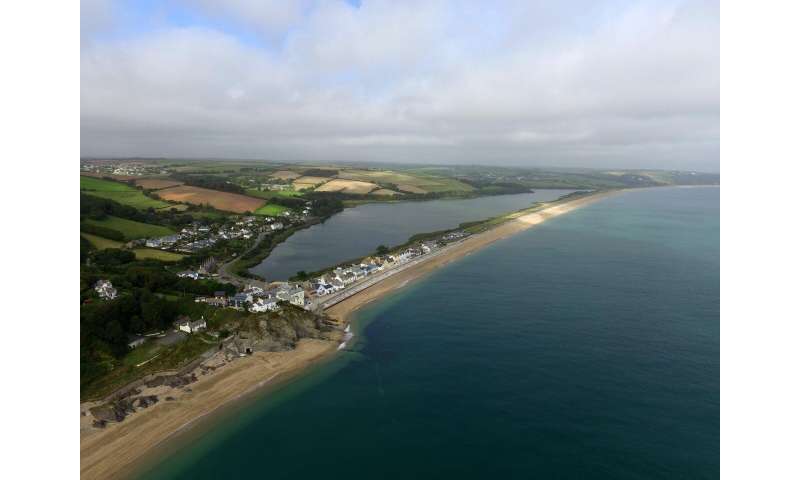
[ad_1]

Slapton Sands in Devon (UK), with the village of Torcross in the foreground, is an example of where the beach has room to move and therefore survive Credit: University of Plymouth
An international team of coastal scientists has rejected suggestions that half the world’s beaches could go extinct over the course of the 21st century.
The claim was made by European researchers in a paper published in Nature climate change in March 2020 (Sandy coasts threatened with erosion by Vousdoukas et al).
However, academics from the UK, France, South Africa, Australia, New Zealand, and the US have reviewed the data and methodology that underpinned the original study and say they strongly disagree with its conclusion.
They have now published a rebuttal to the article in the same journal and concluded that with the global data and numerical methods available today it is impossible to make such comprehensive and far-reaching predictions.
Crucial to their disagreement with the original document’s conclusions is the fact that they claim that there is the potential for beaches to migrate to land as sea levels rise and coasts recede.
The key concept behind this is that if beaches have room to move to under the influence of sea level rise – referred to as accommodation space – they will retain their overall shape and form but in a more landward position.
The new research says beaches backed by hard coastal cliffs and engineering structures, such as dikes, are likely to disappear in the future due to sea level rise as these beaches are unable to migrate to land.
They will first experience “coastal compression” resulting in a decrease in width and eventually drown.
However, beaches backed by low coastal plains, shallow lagoons, salt flats and dunes will migrate to land due to rising sea levels. In these cases, the shoreline will recede, but the beaches are likely to remain, albeit a little raised in elevation and located towards the land, and certainly will not “die out”.
The new document states that there is currently no information available globally on the number of beaches that fall into either category, and as such, it is impossible to quantify what percentage of the world’s beaches will disappear between now and 2100.
Andrew Cooper, professor of coastal studies at Ulster University and lead author of the new paper, said: “New methods are needed to predict the impacts of sea level rise on the coast. This will require better coastal landform data sets. and a better understanding of shoreline response mechanisms in certain settings. As sea level rises, shoreline retreat must and will happen, but the beaches will survive. The biggest threat to the continued existence of beaches is defense structures coastal areas that limit their ability to migrate “.
Co-author, Professor Gerd Masselink, of the University of Plymouth Coastal Processes Research Group, conducted a study earlier this year that found that island drowning is not inevitable with rising water. sea level.
He added: “Sea level is currently rising and will continue to rise at an increasing pace for many years to come. This will lead to more coastal erosion and it is crucial to anticipate future land loss and take it into account in coastal areas. and planning to avoid endangering more coastal buildings and infrastructure. In the UK, Coastal Change Management Areas (CCMAs) are becoming increasingly important as a planning tool. CCMAs are areas that could be affected by Coastal changes in the future and development in these areas should be avoided. This will then allow the coast to respond naturally to sea level rise, preventing coastal compression and loss of beaches. “
Coastal structures such as dikes prevent beaches from naturally adapting to sea level rise by migrating to land and in such contexts, removal of structures (managed realignment) or nature-based solutions (beach nourishment) may be the only methods to safeguard the future of these beaches.
40% of the beaches in O’ahu, Hawaii could be lost by the middle of the century
Cooper, JAG, Masselink, G., Coco, G. et al. Sandy beaches can survive rising sea levels. Nat. Clim. Chang. (2020). doi.org/10.1038/s41558-020-00934-2
Provided by the University of Plymouth
Quote: Beaches Can Survive Sea Level Rise as Long as They Have Room to Move (2020, October 27) Recovered October 27, 2020 from https://phys.org/news/2020-10-beaches-survive-sea- level-space .html
This document is subject to copyright. Aside from any conduct that is correct for private study or research purposes, no part may be reproduced without written permission. The content is provided for informational purposes only.
[ad_2]
Source link